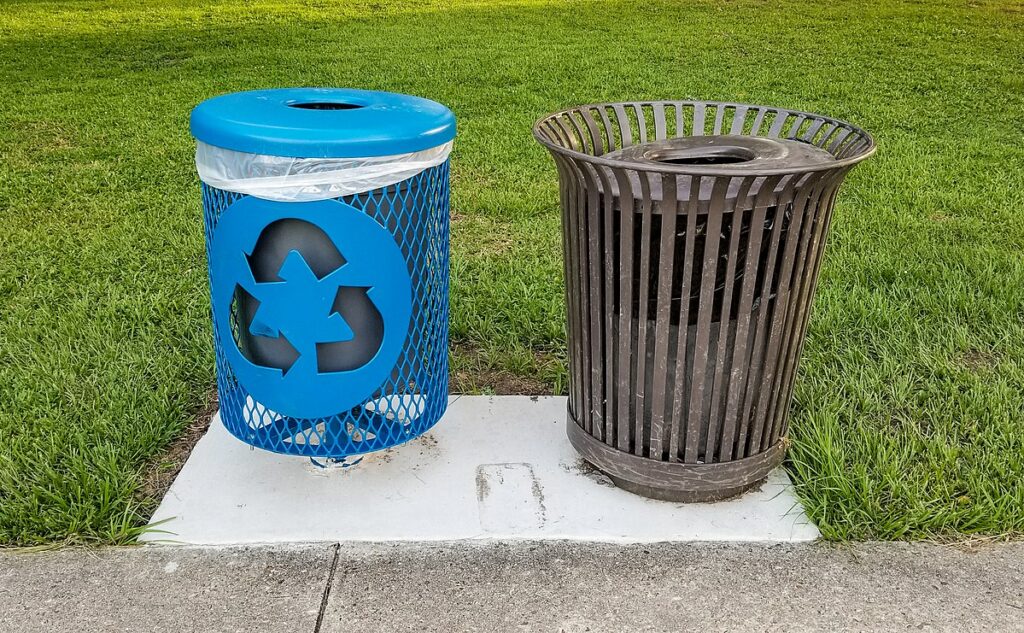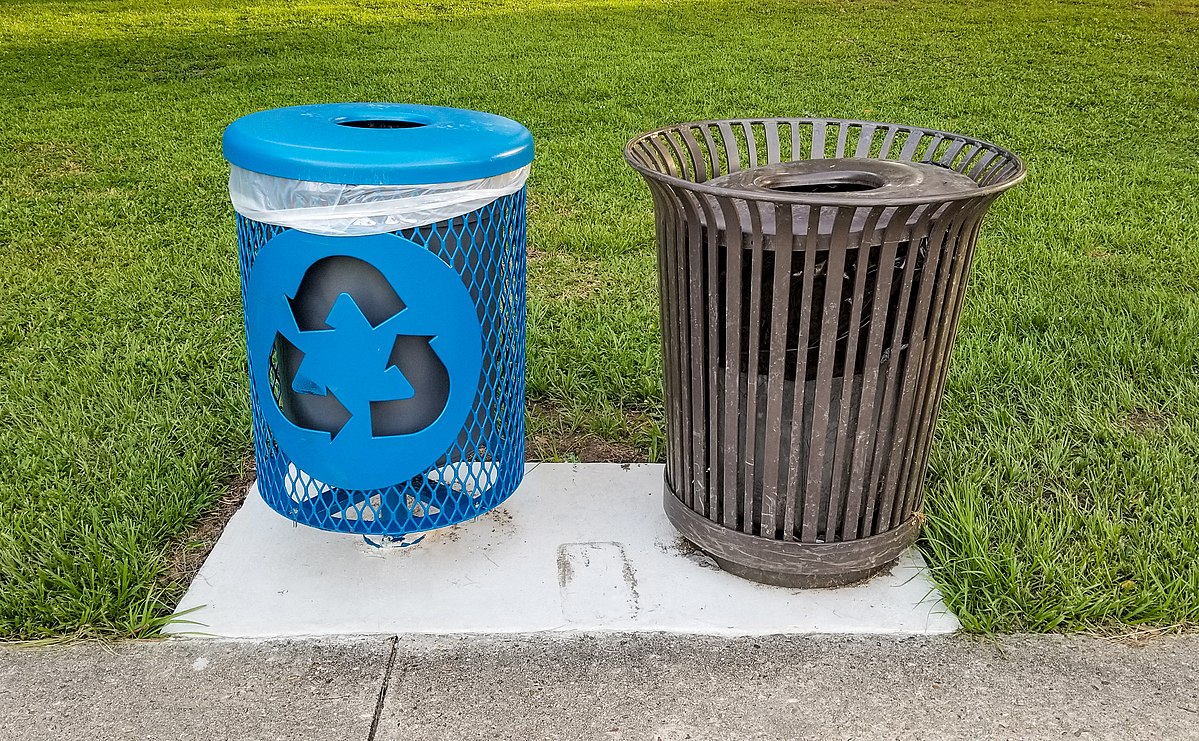
Keeping waste out of both garbage and recycling bins isn’t just good for the environment, it’s good for you.
Investing in reusables will save you cash
In the last few years, there has been a rise in both the conversation around and the actions towards environmentalism. The slow murmurs of doom surrounding the fate of our planet and our journey down the path of no return are encouraging many to try to do something—anything—to curb the damage.
While it’s true, the devestation to our environment is much more likely to come from a large corporation, wreaking the kind of havoc on a daily basis that a human might do in their lifetime, that doesn’t mean we still shouldn’t try to do our part. The average American will produce 102 tons of trash in their lifetime, or 204,000 pounds of waste.
However, many people are still wary to make the switch over to reusable products because of the cost. Why spend $15 on reusable baggies when a pack of Ziplocs costs $3? And while this is fair, I hope to show that not only is switching over to reusable the responsible option, it’s also cost-efficient.
Bidets
Perhaps not where you thought we would start the conversation on reusable energy—on the toilet—but let’s look at some figures nonetheless.
The average cost of a roll of toilet paper is roughly 84 cents, and the average person will use around 100 rolls per year. So, we’re looking at an average cost of $84 a year on toilet paper alone.
Bidets can lower toilet paper usage by roughly 75 percent and you can get a Tushy-brand bidet attachment for your toilet for $110. I know, this sounds like a lot, but, let’s say you make the switch. With your usage down by 75 percent, you’re spending about $21 per-person on toilet paper per-year versus $84, bringing you out to a grand total of roughly $131 this year.
However, by next year you’re only spending $21 a year on toilet paper. In one year’s time, you will have saved $16 (including the original cost of the Tushy), in two year’s time you will have saved $79. These savings only increase if you have more than one person in your household.
There is the argument that bidets use water, an important resource. Yet, one roll of toilet paper takes six gallons of water to create and each time you flush the toilet you use four gallons of water. Bidets use one-eighth of a gallon of water and can decrease your necessity to flush.
Savings after one year: $16
Reusable baggies
The average American family will go through roughly 500 Ziploc bags per-year. Granted, the average cost of a Ziploc bag is only around four cents. Still, in a year, that family will still be spending roughly $20 on Ziploc bags, whereas a pack of 15 reusable baggies can be had for $15.
Meaning, after the first year, that family can save $5 from Ziploc bags alone, and by the second year, they can save a total of $25. This just goes to show if the smallest shifts can end up having a pretty decent payout over time.
Savings after one year: $5
Washcloths
I do get the craze for paper towels. There is something so convenient about cleaning up a big mess with a pile of paper towels, but it’s not quite so convenient cost-wise.
One roll of paper towels costs about $1 and the average person will use roughly 80 rolls per year. But a nice 24-pack of washcloths can be found for $15. So, in a single year, you can go from spending $80 on paper towels to $15 on washcloths, and in two years you will have saved a grand total of $145 on paper towels.
Not to mention how kind this one is on the environment, with one roll of paper towels taking over six gallons of water to produce.
Savings after one year: $65
Reusable water bottle
These have been on most people’s radar for a while now, but they’re still a big issue. The average American uses around 167 plastic water bottles per-year. At about 70 cents each, that’s over $115 on plastic water bottles alone. Or, you could make a one-time cost of $10 for a reusable bottle, saving about $107 your first year with the bottle and roughly $224 by the second year.
The savings on this one are crazy, just for water bottles!
Savings after one year: $107
Reusable bags
While the cost of this remains in the future (so I will not be including it in the final savings over the course of a year), many states are instituting a tax on plastic bags. These bags can be taxed up to 10 cents, and with the American family taking home 1,500 shopping bags per year, one family could spend $150 on plastic bags alone.
On the other hand, you could get a pack of ten reusable bags for $10, which would end up saving you $140 your first year, and $290 by your second year. Considering how many plastic bags we use, and how cheap reusable bags are, I wouldn’t even mind seeing this tax just to encourage North Dakotans to make the transition.
Savings after one year: $140
Dryer balls
Wool dryer balls are triply helpful: they’re better for the environment, they’re better for your wallet and they will help your coats and quilts keep their stuffing in the right place in the dryer.
With the average family using about 520 dryer sheets per year (or double that if you use more than one sheet per load of laundry), and the sheets costing roughly five cents apiece, that’s about $26 per-family, per-year. Honestly, that doesn’t sound too bad until you consider a pack of dryer balls can be had for $5, saving you $21 that first year and $42 by the second.
Savings after one year: $21
Period underwear
Here is where I hope I don’t lose people, but period underwear is a really great way to save on costs and waste. While many women are uncomfortable with the concept, the idea of a reusable feminine hygiene product is a great way to encourage comfort and cut down on the stigma surrounding feminine health.
The average woman will spend about $160 a year on period products. While an investment at $20 a pair, if a woman were to buy two pairs of the Thinx brand useable period underwear, she could save $120 in her first year of use, and $280 by her second.
Although this is one of those products you would likely replenish every two years or so, discarded feminine hygiene products produce over 200,000 tons of waste each year, so replenishing this product is still worth it.
Savings after one year: $120
Making the switch
While I know there’s a lot of statistics and figures included here, it’s important to remember how all of these seemingly small changes can really add up. Just by taking the steps to switch to the reusable products highlighted in this article alone, by this time next year you could save up to $334 and keep a pretty hefty amount of waste out of landfills.
Reusable products are an investment, but they’re an investment that pays off, even if you don’t always see the results quickly. Spending $10 on that water bottle when a pack of 24 plastic bottles is $5 does always feel thrifty at the moment, but in three months your investment will have begun to pay you back.
Do your fellows humans a favor, and most importantly do yourself a favor, seek out reusable products in your life and lessen your financial load.
